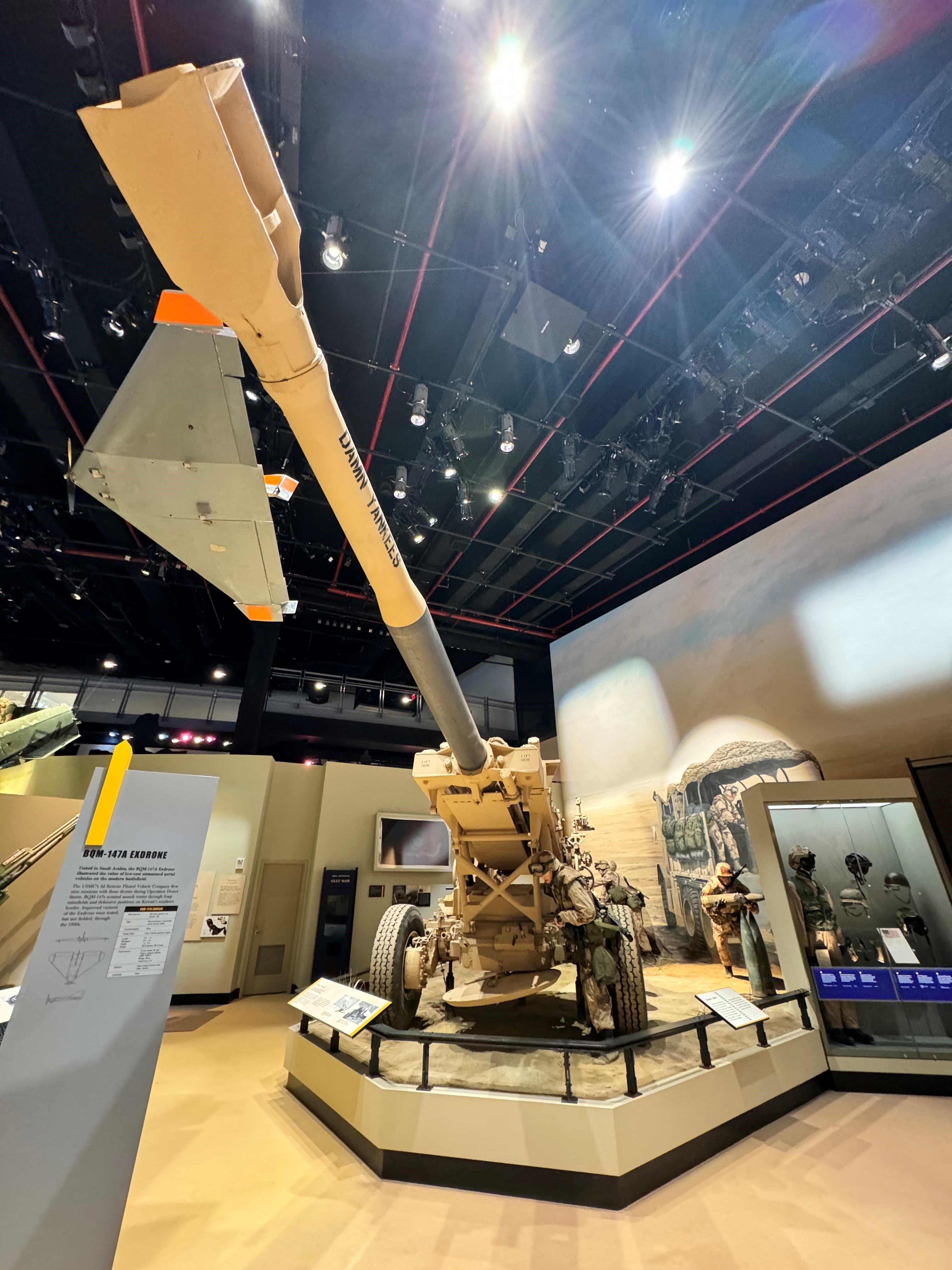MARINE CORPS LOGISTICS BASE ALBANY, GA -- In the heart of southwest Georgia and the vast desert of Barstow, California, artisans at Marine Depot Maintenance Command’s (MDMC) Production Plants pour their skill and dedication into their daily mission—ensuring readiness through organic field-level and depot-level maintenance support. But here’s a little-known fact: these craftsmen also serve as stewards of history, preserving the legacy of the Corps by restoring iconic Marine Corps ground systems so the vehicles can continue to inspire for generations to come.
One of the depot's more notable restorations is Genesis II, an M60 tank known for spearheading the Marine attack on the Southern frontier of Kuwait during the opening moments of Operation Desert Storm. After years of being displayed outside the former Marine Corps Air-Ground Museum in Quantico, Virginia, the exposure to the elements left the tank corroded and its paint faded, jeopardizing its historical value. Recognizing its significance, the artisans at MDMC were tasked by the National Museum of the Marine Corps with meticulously restoring the tank, ensuring its place in Marine Corps history. The restoration and more about Genesis II is highlighted in Chapter 4 of the book Always Faithful, published by the Marine Corps University Press in 2024 to coincide with the unveiling of a new exhibit and the Marine Corps’ 250th birthday celebrations.

Genesis II, an M60A1 Main Battle Tank, sits in the craneway of Marine Depot Maintenance Command waiting to be refurbished as part of a restoration project between MDMC and the National Museum of the Marine Corps in 2015. (U.S. Marine Corps Photo by Nathan Hanks)
The MDMC team used their expertise to remove rust, repair damage, and apply a historically accurate paint scheme, restoring the tank to its former glory. Every detail, down to the rivets and welds, reflected their dedication to preserving Marine Corps history.
Genesis II was returned to Quantico in September 2016 and became one of the first artifacts displayed in the museum's two new galleries, which highlight Marine Corps history from 1976 to 2021. Following a meticulous two-day installation process, the tank now stands as a powerful tribute to Marines who served during that era.

Genesis II on display at the National Museum of the Marine Corps. (National Museum of the Marine Corps Courtesy Photo)
MDMC’s partnership with the National Museum of the Marine Corps spotlights the depot’s ability to meet exacting standards while respecting the historical significance of each artifact. Genesis II is only one of several vehicles restored by MDMC. More recently, the team has restored several vehicles for the museum’s newest galleries, which opened in October of 2024. The galleries - "Forward Deployed" and "Afghanistan and Iraq” chronicle significant events such as Operations Desert Storm, Iraqi Freedom, and Enduring Freedom.
MDMC’s contributions to the newest exhibits include the restoration of an AAV P7 (Amphibious Assault Vehicle), LAV (Light Armored Vehicle), and M198 howitzer. These vehicles were not just representative but were on the ground during the events they depict, playing a direct role in the history being showcased. They anchor the displays, highlighting the Corps’ evolving role in conflicts and missions, and illustrating the machines that supported Marines in their most challenging moments.

An Amphibious Assault Vehicle (AAV) takes center stage, embodying the Marine Corps' legacy of amphibious warfare and adaptability. Featured in the National Museum of the Marine Corps, this display honors the vehicle's pivotal role in projecting power from sea to shore. (National Museum of the Marine Corps Courtesy Photo)

A restored Light Armored Vehicle (LAV) stands at the heart of the exhibit, 'A Break on the March to Baghdad,' showcasing the courage and determination of Marines during the 2003 Iraq invasion. National Museum of the Marine Corps. (National Museum of the Marine Corps Courtesy Photo)

The restored M198 Howitzer, part of the battery that fired the first rounds into Kuwait during a series of artillery raids against Iraqi forces, stands in a display at the National Museum of the Marine Corps as a powerful symbol of Marine Corps precision and firepower. (National Museum of the Marine Corps Courtesy Photo)
The depot also restored a HMMWV (High Mobility Multipurpose Wheeled Vehicle) that highlights the Marine Corps’ critical role in peacekeeping and humanitarian assistance. Now part of a display depicting Marines in Haiti during Operation Uphold Democracy, the exhibit brings attention to the often-overlooked humanitarian side of the Corps’ mission.

A restored Humvee, brought back to life by Marine Depot Maintenance Command (MDMC), stands at the center of this display, depicting Marines in Haiti during Operation Uphold Democracy. (National Museum of the Marine Corps Courtesy Photo)
From repairing battle-worn vehicles to restoring museum artifacts, MDMC’s work ensures that the courage, sacrifice, and dedication of the Marines endure. For visitors to the National Museum of the Marine Corps, the restored artifacts serve as more than just static displays—they are touchstones to the past and reminders of the Corps’ extraordinary legacy.